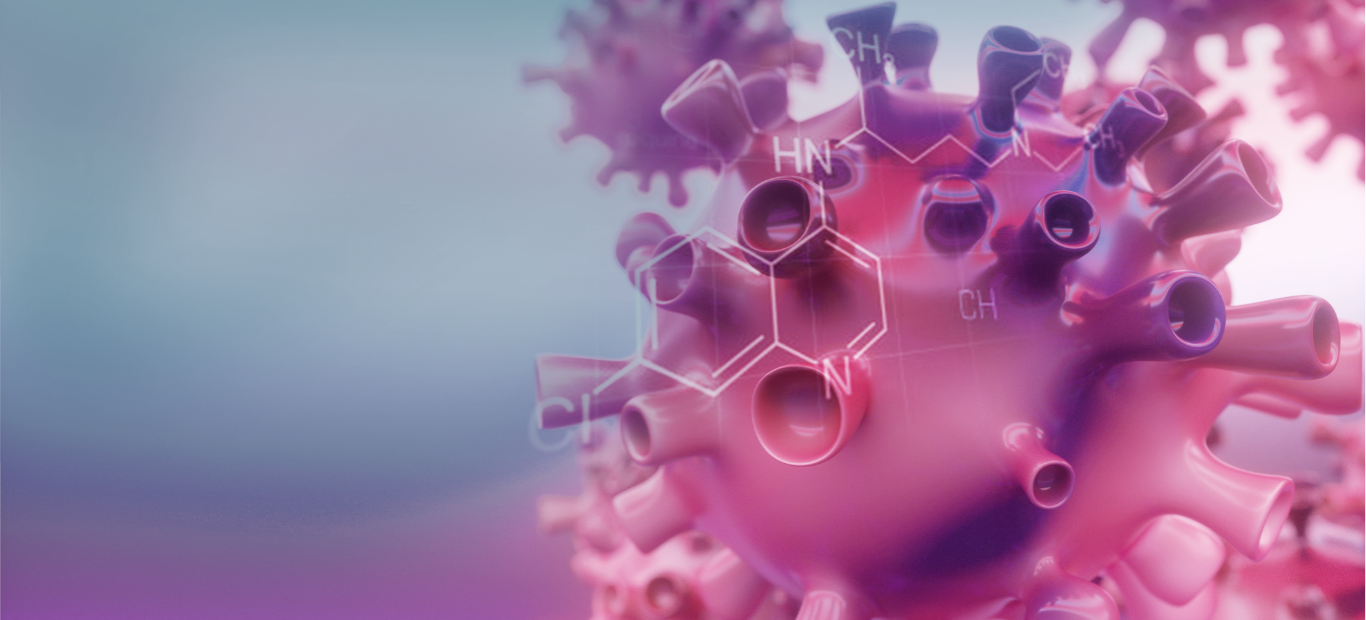Chloroquine in Covid-19 Treatment
Chloroquine is not a new drug that is made or presently known in the world. For more than 70 years, chloroquine has been used in various parts of the world to treat malaria, rheumatoid arthritis, and lupus. Recently, the name chloroquine is often mentioned as a drug regimen that can be used to treat COVID-19. The Indonesian government has been said to have ordered three million chloroquine pills intended for the treatment of COVID-19 in Indonesia. However, it turns out that the World Health Organization (WHO) has reportedly urged Indonesia to stop using chloroquine and its derivatives - such as hydrochloroquine - as a treatment for COVID-19 for safety reasons.

Sumber foto: health.grid.id
What is the actual safety status of chloroquine in its use as a treatment for COVID-19?
The pre-clinical / laboratory tests proved that chloroquine was highly effective in preventing the replication of the SARS-CoV-2 virus (the virus that causes COVID-19). With the administration of standard doses alone, chloroquine can penetrate well into body tissues, including the lung tissue. The 'anti-virus' mechanism of chloroquine is predicted to occur because chloroquine can disrupt the attachment between the virus and the target cells of the body. This mechanism can occur because of the ability of the active substance of chloroquine to increase the base level of the endosome so that it can interfere with the fusion between SARS-CoV-2 and target cells so that the infection process can be prevented. Chloroquine can also inhibit the entry of SARS-CoV-2 by inhibiting the glycosylation process of ACE2 (angiotensin-converting enzyme). By inhibiting this glycosylation, the bond between the virus and the target cell receptors will be disrupted.
Not only chloroquine, but a derivative of chloroquine (hydroxychloroquine) is also said to have similar effectiveness in the 'treatment' of COVID-19. A study conducted in China showed that hydroxychloroquine proved to be quite effective in inhibiting the process of virus penetration into cells and also in slowing down the replication of viruses that had continued to enter the host cell.
These are the results of the pre-clinical trial of chloroquine in the treatment of COVID-19. What about the effectiveness of chloroquine and hydroxychloroquine when used on "real" patients?

Image source: biospectrumasia.com
Until now, there only two scientific publications related to chloroquine research on COVID-19 cases. The first research was carried out on 36 samples in France. Phillippe Gautret and colleagues are said to have conducted open-label clinical trials of chloroquine and hydroxychloroquine (without randomization) on 26 confirmed COVID-19 patients and 10 control samples. The group of confirmed patients took 200 mg of hydroxychloroquine sulfate three times daily for ten days. Six of them were also given azithromycin (a type of antibiotic) at a dose of 500 mg/day for five days, and then a dose of 250 mg/day for four days. The results of the short trial showed a positive impact on patients who took hydroxychloroquine, either alone or in combination with azithromycin. These patients then tested negative for COVID-19 on the sixth day of treatment.
The second research was conducted in China, where Jianjun Gao and colleagues from the Department of Pharmacology of Qingdao University gave chloroquine therapy to 100 patients with confirmed COVID-19. The results from this brief study also showed that patients who received chloroquine treatment-experienced faster clinical improvement, had less viral loads, had no worsening of lung inflammation, and had faster negative COVID-19 results when compared to patients who not receiving chloroquine treatment.
What needs to be remembered is that the two studies are said to prove a positive impact on COVID-19 patients who receive chloroquine treatment. However, this does not necessarily mean that the 'experimental drug' is separated from chloroquine in its capacity as a 'COVID-19 drug' because after all, both studies were carried out on limited samples and in a short period.
Although it has health benefits, like other medicines, chloroquine and hydroxychloroquine also have side effects that must be watched out for. Chloroquine is known to have a narrow therapeutic index, which means that the concentration of chloroquine to produce a beneficial therapeutic effect is relatively close to the concentration of chloroquine to produce side effects / adverse effects. Some of the side effects of chloroquine include disturbed heart rhythm, muscle disorders, and damage to the retina of the eye.
A study conducted in Brazil also confirmed the side effects of chloroquine treatment. The study was conducted on 440 patients with confirmed COVID-19 who were divided into two groups. The first group received chloroquine in a high dose of 600 mg given twice a day, for ten days. The second group received chloroquine in a lower dose of 450 mg given for five days. On the first day, the drug was given twice a day and on the following four days, it was only given once a day. In the days after drug administration was started, researchers have found a fairly dangerous heart rhythm disturbance (ventricular tachycardia) in patients receiving high doses of chloroquine. Two of the patients even died.
Until now, a specific drug to treat COVID-19 has not been found. Until recently, chloroquine was approved by the Food and Drug Administrator (FDA) only in its capacity for the treatment of malaria, rheumatoid arthritis, and lupus. Until now, there has been no approval from any health association to confirm chloroquine as a treatment for COVID-19. However, chloroquine is still included in the COVID-19 Management Protocol issued by the Ministry of Health. However, the protocol also states that COVID-19 patients who receive chloroquine treatment should have an EKG examined on them at least once every three days. Therefore, until the time when specific drugs intended for the treatment of COVID-19 are found, health workers are expected to be wise in determining the drug regimen to be given to COVID-19 patients, both in terms of type and dosage. In every treatment provision, health workers are also expected to be careless in monitoring and anticipating possible side effects that may occur.
********
Author





 7914
7914



 04 Sep 2025
04 Sep 2025 758 kali
758 kali





